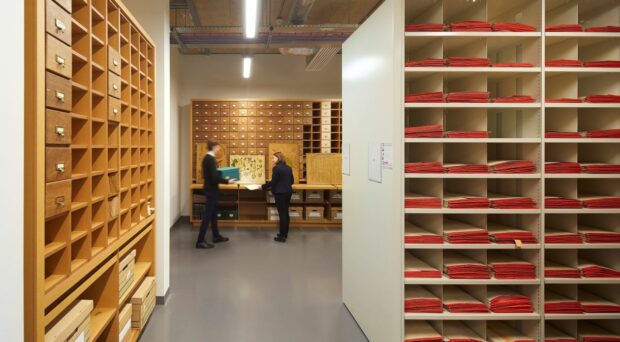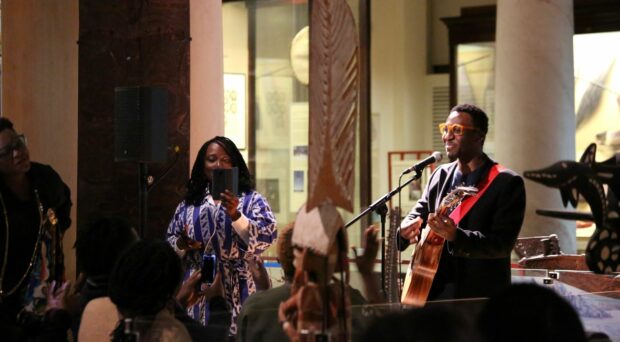As part of the India Unboxed season, the University of Cambridge Museums commissioned non zero one to develop a digital encounter at the Museum of Archaeology and Anthropology.
The India Unboxed season has been about challenging our museums and offering an opportunity to be a bit bolder, to explore beyond the regular offer and to deal with certain themes even though they can be difficult or controversial. Rooted in the museum collections, India Unboxed introduced innovative platforms and formats to explore themes of identity and connectivity for diverse audiences in the UK and India.
With this commission, we wanted to step beyond the boundaries of stereotypical perceptions and enable contemporary and critical engagements, celebrating the diversity and plurality of the subcontinent and its unique relationship with the UK. We aimed to bring new voices into what are predominantly historical collections, as well as open up a dialogue and a new way to engage with audiences, support enquiry and approach controversial themes in a different way.
A significant part of that dialogue has been between non zero one’s artists, University academics and the museum in the lead up to the project. take-hold was underpinned by the research of Danika Parikh, Akshyeta Suryanarayan and Ananya Mishra (University of Cambridge PhD researchers), who studied the Museum of Archaeology and Anthropology’s current displays, and their provenance and labelling. We will be exploring their work in a future post, but for now, as the experience is installed at the Museum, we have a chance to talk with non zero one to reflect on the project.
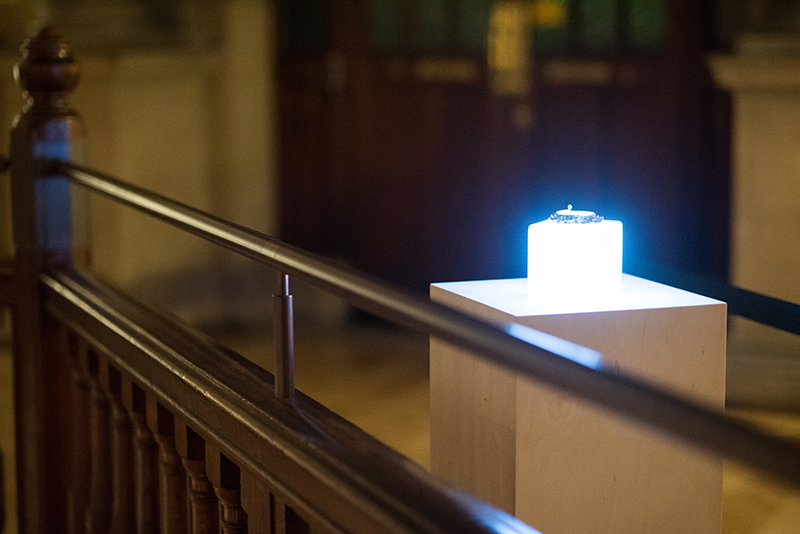
First of all, can you tell us a bit about yourself and non zero one?
My name is Cat Harrison, and I’m one of the artists who have created take-hold at the Museum of Archaeology and Anthropology (MAA). I’m part of artist collective non zero one, who make lots of interactive and digital experiences for museums, theatres, foyer spaces – wherever we can get our hands on really! For example right now we’re also installing a new app for school groups across three of the Imperial War Museum sites and an audio installation of young poets’ work at the Roundhouse in London. For take-hold we have been working with incredible artist Sheila Ghelani, whose work spans performance, installation and moving image. We’ve wanted to collaborate with Sheila for a long time, with her strong-yet-fragile style and expert consideration for people – and because take-hold is inspired by MAA’s Another India exhibition it was also fantastic to bring in her incredible experience in creating work that references her Gujarati roots.
And can you tell us a bit more about take-hold?
take-hold is all about questioning our expectations and the way we act in museums. Especially in regards to museum objects – why do we treat museum objects so differently from our everyday objects? Is it just because they’re old? And do we really need to put things behind glass and give them labels? Is there a more interesting way visitors could be engaging with these artefacts? Through asking all these kinds of questions take-hold aims to give visitors a totally different perspective walking round the museum.
take-hold is a little bit like a museum audio guide – you sign up at reception to get a pair of headphones and a little audio device. But as soon as you press play you realise it’s not like your usual audio tour… Different voices guide you round, but these voices can be funny as well as informative and sometimes they’re a little bit cheeky too. I don’t want to give too much away but at some points you might find yourself pressed against glass, handling museum artefacts in weird and wonderful ways or even given the opportunity to take an object if you think it should leave the museum.
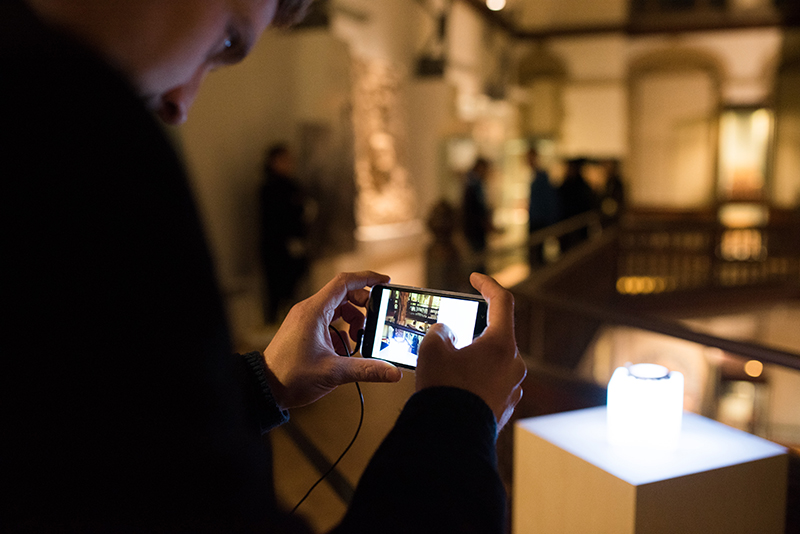
What’s been your design process for take-hold?
When the University of Cambridge Museums (UCM) commissioned us, they asked us explore new ways to engage with audiences and support enquiry and approaching controversial themes in a different way. One of the most important questions was to tackle the untold stories – a critical point of entry to the museums that questions the ‘truth’ of the museum narratives. How do we tell the whole story, how do we invite different points of view to interpret the often complex and uncomfortable stories behind the collections? The aim was an alternative tour introducing a different perspective to the museum narrative, inspired by the Another India exhibition.
So the first thing we all did was head to MAA and spend a lot of time there. We looked at all the exhibitions, read all of the labels, looked at the handling collection and the shop. Something that we discovered about the Another India exhibition is that the labels are written in a very different way to the labels in the rest of the museum. The labels are sometimes written in different voices, in voices that reference the colonialist background of the acquisition of the objects on display. In some instances, it almost seems apologetic or angry that the histories displayed in the exhibition have such limited knowledge behind them – a lot of what we know is simply through the donors of the objects, most of whom are colonialists.
From this we knew we wanted to create a piece with many voices, something that began to express how each object has its own individual history, and that many different voices could contribute to that story.
We researched into the Adivasi [India’s Indigenous communities] and Museum Theory (including listening to a lot of podcasts!) and interviewed a whole load of people when making the work too – different PhD students from the University of Cambridge (studying museology, India, Asia) as well as different people who work in MAA and for the UCM. Some of the script for the piece is taken straight from these interviews and what people said.
From all of this research, interviews and site visits we designed a few different experiments of ideas, and tried these out in the museum. One idea we were really keen on we tried out with the public at the MAA Cam Late, and with a bit of tweaking this now forms the end of the piece. Testing it with a live audience was a really important element of the development process.
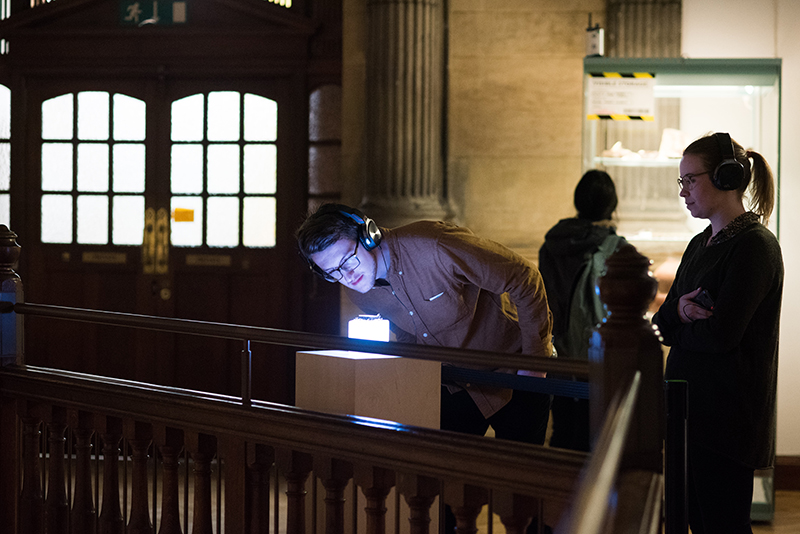
In your opinion what are the key challenges museum face and how can immersive experiences help to address these challenges?
I think a lot of people wonder how museums are still relevant in the 21st Century, when so much information can be gathered online, and so many of the objects and how they are acquired can be so contentious. What I think is brilliant about this commission is that they’ve given us the freedom to make a piece that brings some of these problems, these questions to the forefront so that people can form their own opinion. If seeing objects behind glass feels similar to seeing objects online, then how do visitors feel with the responsibility of touching and holding the objects for themselves?
There are one million objects in the museum’s collection, and the other challenge facing museums is how to represent each object fairly, when not all of them can even be displayed. And for the ones that are displayed, how do we decide whose voice is on that small label of 3 lines. Immersive experiences can remind us to question some of these labels placed in front of us, or try to ask those further questions that might give us a different connection to it, a bit like viewing an artwork.
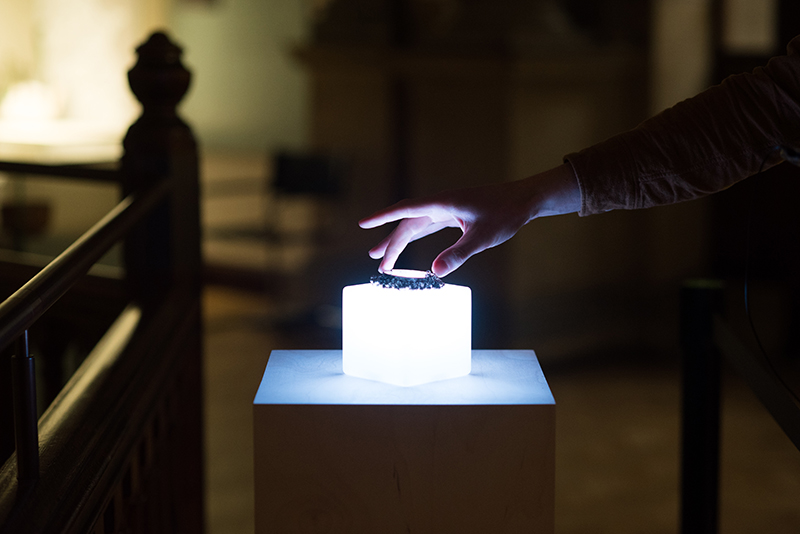
What do you hope visitors will take away from the take-hold experience?
With take-hold we hope people will take away a new way of visiting museums. This might be by visiting a museum and only concentrating on seeing one or two objects, or it might be by thinking of the myriad voices each object contains – the ones that aren’t contained in each label. It might even be in thinking of the history of museums, their (sometimes murky) pasts and what hopes we have for museums in the future. It might simply give each visitor a different engagement with the museum, a fun half hour to explore what is a completely mind-blowing museum.
take-hold is now available at MAA until the end of April.






